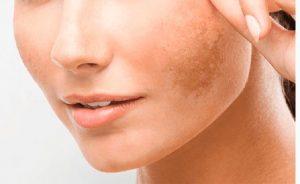Protect Your Skin With Sunscreen
Sunscreen is a necessary preventative health maintenance habit that should be taken all year long, not just during the summer months. High snow can reflect up to 80% of direct UV (UV) radiation, increasing your exposure to harmful sun damage. Also, the higher the elevation, the more UV radiation, so sunscreen is critical for family ski trips, as well. Summer is typically the height of sunlight benefits when the sun’s energy source is strong and capable of warming your skin to a more acceptable degree. However, while sunlight is a great benefit, you should know that even during the summertime there are serious sun protection benefits to be gained from the sunscreen products that we use each day.
What Is Sun Protection?
Sunscreens are designed to protect your skin from the sun’s harmful effects. There are two main categories of sunscreens: physical and chemical. Physical sunscreens use particles that reflect light back up toward the surface of the sensitive skin. Chemical sunscreens contain chemicals that act as antioxidants, preventing free radicals from forming within the cells of your skin.
Physical sunscreens can be divided into three different types: organic, mineral, and combination. Organic sunscreens are derived from plant sources, while mineral sunscreens are manufactured from naturally occurring minerals. Combination sunscreens combine both organic and mineral ingredients.
Chemical sunscreens come in two forms: non-comedogenic and waterproof. Noncomedogenic sunscreens do not clog pores. Waterproof sunscreens prevent sweat and oil from interfering with their ability to protect your skin.
Types of sunscreen:
There are two types of sunscreen: those with physical filters, such as zinc oxide or titanium dioxide; and chemical filters. Physical filters have been around since the 1940s, but they were only used in small quantities until recently. Chemical filters, on the other hand, are newer. They first appeared in the 1970s and have become increasingly popular over time. Both types of filters work by absorbing UVA rays, which cause aging and wrinkling. The difference between them is how much they absorb. Zinc oxide absorbs about 90 percent of UVA rays, whereas titanium dioxide absorbs about 95 percent. This means that the latter type of filter will block out more of the damaging rays than the former.
The best way to choose a sunscreen
The best way to choose sunscreen is by its SPF rating. A high SPF number indicates that it offers good protection against both UVA and UVB rays. In general, an SPF of 30 blocks 97 percent of UVB rays and 99 percent of UVA rays. If you’re looking for a broad-spectrum sunscreen, look for one with an SPF of at least 50. You want to apply sunscreen every 2 hours, regardless of whether you plan to spend time outdoors. It’s important to reapply sunscreen after swimming, sweating, or perspiring because these activities increase your body temperature. When applying sunscreen, make sure to rub it into your skin thoroughly. Use enough product to cover your entire exposed area. Don’t forget to protect your lips and eyes. Also, don’t forget to wear sunglasses if you plan to be outside for any length of time.
What type of sunscreen should you use?
Sunscreens come in many forms: lotions, creams, sprays, gels, ointments, and liquids. The most effective form is a broad spectrum SPF 15 or greater with UVA/UVB protection. A good rule of thumb is that if you have to ask which one to use, then you probably shouldn’t be outside.
How do I choose the right sunscreen?
There’s no easy way to tell what kind of sunscreen will work best on your skin. Most people find that they need to experiment with various products before finding one that works well for them. But there are some things you can consider when choosing sunscreen. First, check the label to see if it contains the following sunscreen ingredients: oxybenzone, retinyl palmitate, PABA, or PEG-40 hydrogenated castor oil.
How to apply sunscreen
Apply sunscreen for at least 15 minutes before going outside. Apply it liberally over the whole body and under clothing. Reapply if necessary after swimming or perspiring. Use a new bottle each day. If you don’t reapply often enough, you may not get as much protection as you need.
Use a broad-spectrum sunscreen that protects against both UVA rays and UVB rays. When using a spray, rub the product into dry skin. For lotion or cream products, use a cotton ball or tissue to pat it onto your skin.
Use a sunscreen that has a water resistance rating of at least 5. Make sure that the label says “water-resistant.” These products won’t wash off when you swim or shower.
Avoid sunscreens containing oxybenzone, retinyl palmitate, or avobenzone. These chemicals can interfere with hormones and may lead to birth defects.
See also
10 Tips for Protecting Your Skin from the Sun
1. Wear protective clothing. Cover yourself with clothes made of natural fibers like cotton, wool, or silk. These materials help keep you cooler and provide better insulation. Natural fibers also allow air to circulate through them, keeping you drier.
2. Apply sunscreen before going outside. Make sure to put on enough lotion to cover your whole body.
3. Reapply sunscreen often. After spending time in the sun, reapply sunscreen immediately and then again 15 minutes later.
4. Choose sunscreen with an SPF of 30 or above. Look for a broad-spectrum formula that protects against both UVA and ultraviolet B rays.
5. Keep sunscreen close by. Store it in a cool place where it won’t melt.
6. Avoid using tanning beds. Tanning beds emit dangerous levels of UV radiation.
7. Limit your time in the sun. Try to stay indoors whenever possible.
8. Take breaks from the sun. Get some shade or go inside.
9. Stay hydrated. Drink plenty of water to avoid dehydration.
10. Seek medical attention if you experience severe sunburn.
What are the dangers of sun exposure?
Sunlight contains two types of energy: visible light and invisible ultraviolet light. The sun emits UV exposure in three different ranges: UVA, UVB, and UVC. UVA rays penetrate deep into the skin. They cause wrinkles and age spots, and they can damage DNA and trigger cancer. UVB rays cause sunburns and are responsible for most cases of skin cancer. UVC rays have no effect on humans.
UVA Rays
UVA rays are part of sunlight. They are present even during cloudy days. UVA rays penetrate deeply into the skin and can cause wrinkling, brown spots, and other signs of aging.
UVB Rays
UVB radiation is the main cause of sunburns. They are emitted directly from the sun. They are more powerful than UVA rays and are responsible for most of the skin cancers caused by the sun.
UVC rays
UVC rays are filtered out by the atmosphere. They do not reach the earth’s surface.
Risk of Skin Cancer
The most common form of skin cancer is basal cell carcinoma. This type of cancer usually appears as a small red spot on the skin. It grows slowly and does not spread to nearby tissues. BCC rarely causes death. Other forms of skin cancer include squamous cell carcinoma and melanoma. SCC is more aggressive than BCC. Melanomas are much rarer than BCC and SCC. However, they are more likely to metastasize to distant parts of the body.



